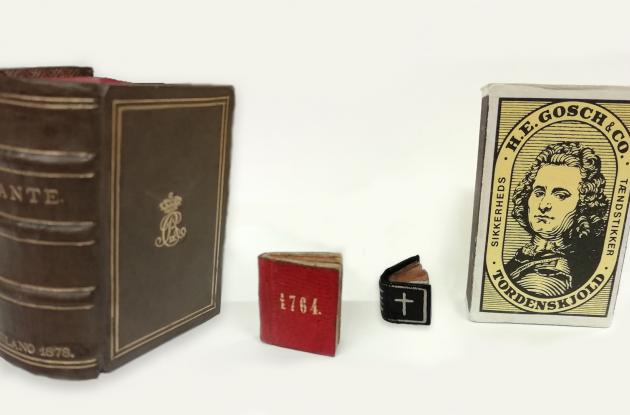The smallest book
Books come in all sizes. Some so large that they have to be propped open to read. Others so small that they disappear on the shelves. Fortunately, not all of them have disappeared over the years.
Miniature books have almost as long a history as books in general. In the beginning, smaller books were probably more practical, but gradually, they also became a way to show off craftsmanship.
Shortly after the art of printing was invented in the 15th century, the early printers began making small books, and from the 17th century onwards, many printed miniature books were published. Especially in the 19th century. One example of such a miniature book is Dante Aligheri's Divina Commedia or in English, The Divine Comedy from 1878. It is said that both the typographer and the proofreader ruined their eyesight while working on the book. Whether this is true is difficult to know, but it is true that one must have rather good eyes to read the small print.
The Comedy, since retitled as the Divine Comedy, was written by the Italian poet Dante Alighieri (1265-1321) in the early 14th century. The book tells the story of the narrator's descent through Hell, all the way down to Lucifer, who in the story lives at the centre of the earth. Then the narrator ascends the Purgatory Mountain and up through the celestial spheres to the inconceivable sight of God, the love that moves the stars.
The smallest book in our collections is The Lord's Prayer printed in Amsterdam in 1952. It measures 5 x 5 mm, but still contains Our Father in 6 different languages (Dutch, English, French, German, Spanish and Swedish).
